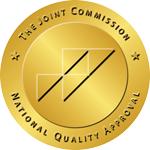Increase In Anxiety and Depression Linked to Increased Problem Drinking
Should we be concerned about an increase in alcohol use post-COVID?
In a letter published in the Journal of General Internal Medicine in late 2020, public health scientists Dawn Sugarman, PhD, and Shelly Greenfield, MD, of McLean Hospital at Harvard University warned that an increase in alcohol use in response to the stress caused by the coronavirus pandemic raised “significant public health concerns.”
The two doctors cited observed increases in alcohol consumption in the U.K. and Australia as potential indicators of similar increases here at home, and pointed out the disturbing fact of the treatment gap for people with alcohol use disorder (AUD): in the U.S. only 7.9% of people diagnosed with AUD receive the specialized treatment they need to address their disordered alcohol use.
They go on to point out that increased drinking – and substance use – is a common response to trauma, stress, and events involving large-scale suffering, injury, or death. A study published in 2009 analyzed the use of alcohol and drugs in response to one of the most infamous mass-trauma events in U.S. history – the 911 terrorist attacks – and concluded the following:
- 7.3% of a population can be expected to increase alcohol consumption in the first two years following a terrorist event
- There is a 20% probability that 14% of a population will increase alcohol consumption following a terrorist event
- An estimated 16.3% of a population can be expected to increase the use of both prescription and narcotic drugs following a terrorist event
Evidence from the aftermath of the 911 attacks is relevant because, although the coronavirus pandemic is not a terrorist attack, it is a mass casualty scenario. At the time they wrote the letter, we were still early in the pandemic. Sugarman and Greenfield made another critical point: unlike the 911 attack, the coronavirus pandemic was ongoing, and no one knew when it would stop.
Stay-at-Home Orders, Isolation, and Stress
In retrospect, the ongoing nature of the public, pandemic-related trauma was something mental health experts did not appreciate fully. Whereas single-incident events cause significant distress and trauma, their finite nature allows people who experience them to process the experience and move forward. That’s to say that their trauma does not persist. Rather, it means that the traumatic event can be contextualized and understood with the benefit of hindsight. This is not the case with the coronavirus pandemic.
Sugarman and Greenfield identified several layers of ongoing pandemic-related stressors that had the potential to lead to increased alcohol consumption:
1. Fear of contracting SARS-COV-2 itself
4. Reduced access to specialized treatment for Alcohol Use Disorder (AUD)
5. Job loss, income insecurity, and worry about finances
These five groups of potential stressors increased the risk of heavy and/or disordered drinking, which can lead to significant physical and emotional problems. Negative physical consequences of excess drinking include liver disease, cancer, high blood pressure, stroke, impaired immunity, and fatalities from drunk driving accidents. Negative emotional and psychological consequences of excess drinking include increased risk of depression, suicide, intimate partner violence, child abuse, and child neglect.
According to Sugarman and Greenfield, that was our current situation early in the pandemic: a perfect storm of stress that had the potential to lead to a nationwide alcohol consumption crisis, which, as noted above, itself had the potential to create a new public health emergency, in addition to the coronavirus pandemic.
And it turned out they were right. Studies published in 2020 and 2021 showed:
- Increases in anxiety disorders
- Increases in depressive symptoms
- A 60% increase in alcohol consumption
- An increase heavy drinking and binge drinking
That’s why it’s important for us to look back at the prescient insight Sugarman and Greenfield offered. The steps they recommended we take a year ago are just as important now as they were then. They may even be more important now.
Steps to Take: Awareness, Assessment, and Treatment
In light of the heightened risk of problem drinking related to coronavirus-related stressors, Sugarman and Greenfield recommended a series of proactive steps we, as a nation, can take to “moderate and reduce alcohol consumption in the face of this pandemic.” They reiterated that the full scope of the pandemic was not yet known and that it’s wise to look to the data provided by researchers in other countries in order to prepare for the potential collateral damage the pandemic may cause in the U.S.
Here’s what they recommended:
Step 1:
We should raise awareness about the fact that stress related to the coronavirus pandemic created and continues to create the risk of increased alcohol consumption, which may escalate to another nationwide health crisis in addition to the coronavirus pandemic.
Step 2:
We should realize our response to this risk needs to be nuanced, multi-faceted, and include everyone with any known risk factors for drinking or excess drinking.
Step 3:
We should advocate forward-thinking public health talking points. Public media outlets can counter the cultural messages (present in the form of social media posts and memes) that promote excess drinking. Public officials can prioritize messaging efforts that promote managing anxiety and stress without alcohol and substance use.
Step 4:
We should be ready for an increase in the need for treatment across a “continuum of severity” that includes “drinking-related exacerbation of other co-occurring medical conditions.”
Step 5:
In primary care settings, we should improve efforts to identify addiction and mental health issues early, by being aware of risk factors for increased drinking such as financial insecurity, and the presence of symptoms of anxiety and depression.
Step 6:
We should focus attention on targeted interventions for people with alcohol use disorder at risk of relapse, and expand access to telehealth, virtual therapy, and online social support communities for people in recovery. Increased access to these services and expanded insurance coverage for mental health/substance use treatment should last through the pandemic and beyond.
Integrated Effort with Full Collaboration
The open letter published by Sugarman and Greenfield – addressed to the medical community as a whole – is an important reminder that while we strive to manage our response to the primary health crisis, the coronavirus pandemic, the secondary effects of the pandemic, such as misuse of alcohol and an increase in alcohol use disorder (AUD), can create severe, chronic physical, emotional, and social consequences that may persist years after we get COVID-19 under control.
The sooner we can identify at-risk individuals, offer accurate diagnoses of AUD when necessary, and provide appropriate treatment and support, the more likely those individuals are to achieve and maintain sustained, long-term sobriety. Any steps we take in this direction will help to contain the scope of harm caused by the pandemic, and give people hope by offering a lifeline of support.
The Ridge in Cincinnati offers inpatient and outpatient rehab facilities. Besides, alcohol detox programs and other amenities help you identify the extent of the problem and get the right solution. Contact us today!


